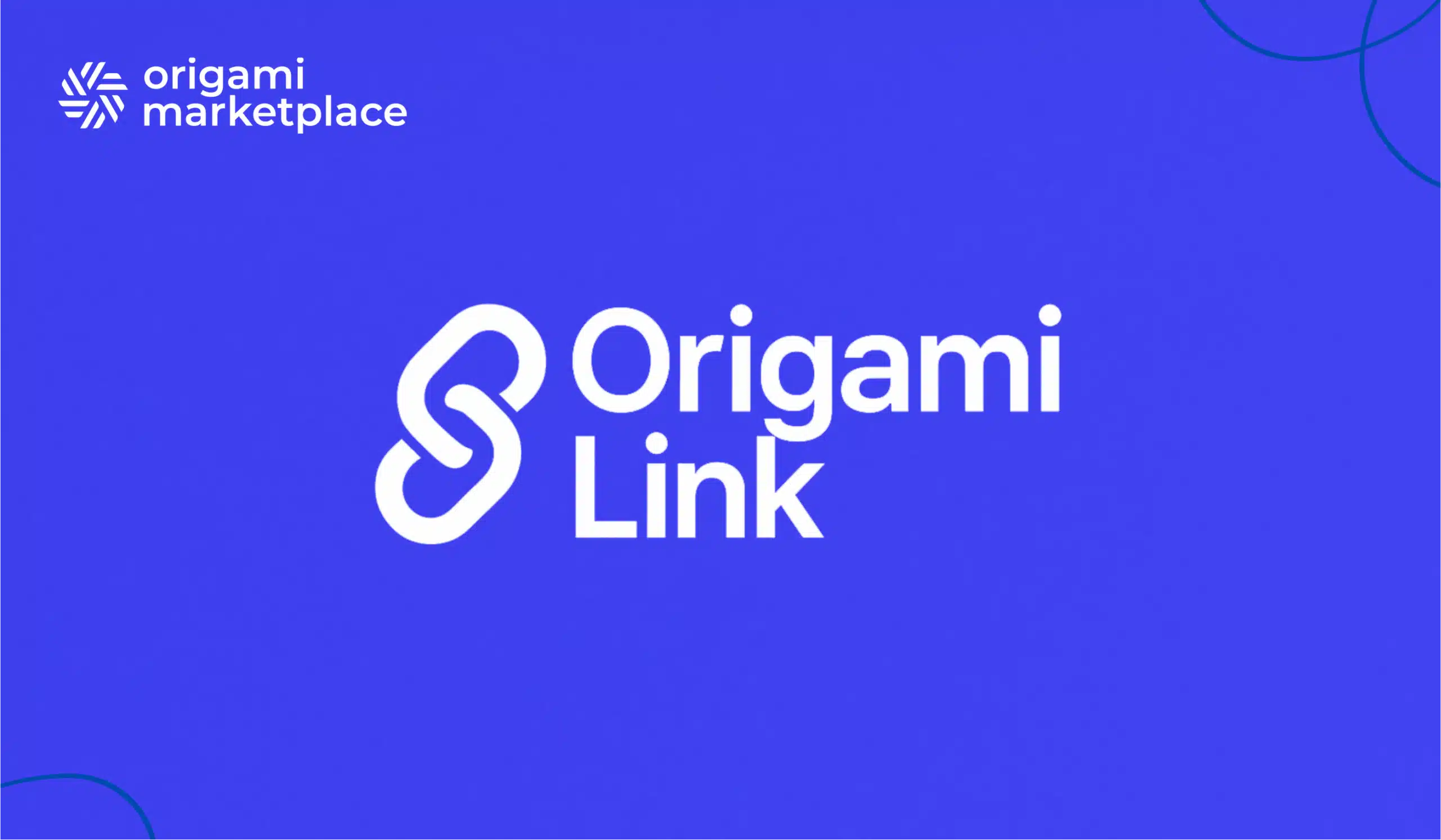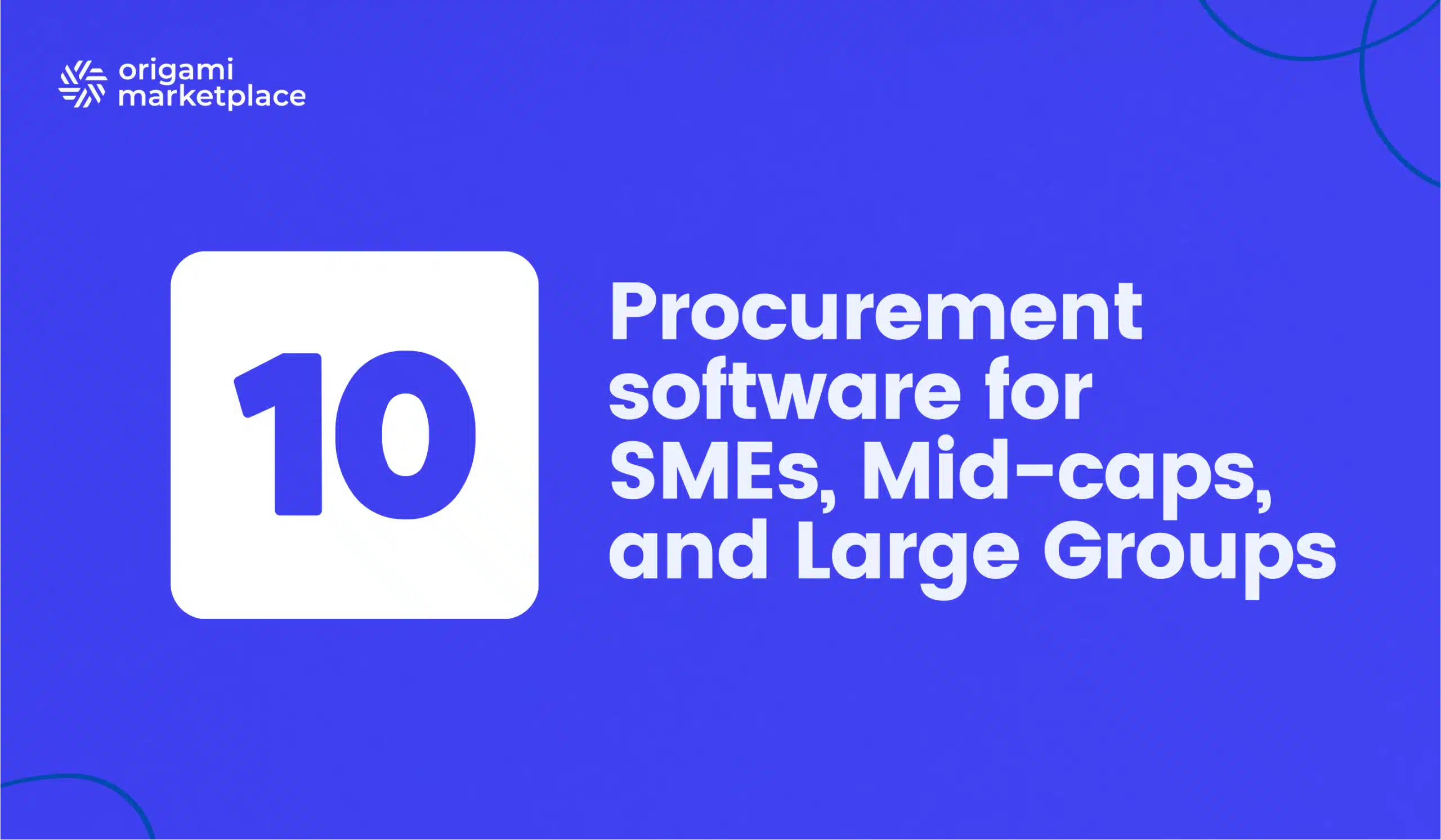Responsible procurement: combining sustainability and efficiency through the marketplace.
- Emeline Kerloch
- 6 minutes de lecture
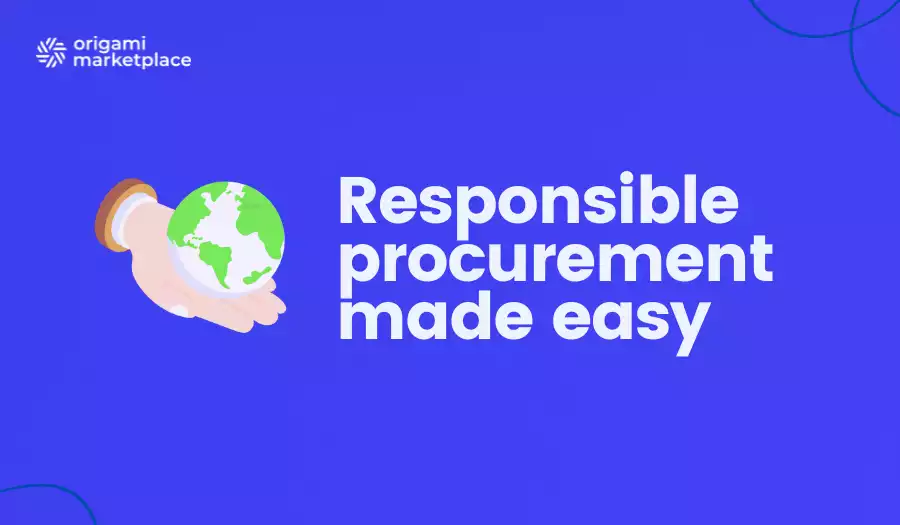
Confronted with dual pressures, the need to control costs and growing demands for corporate social responsibility (CSR), procurement departments find themselves at a crossroads. How can they continue to operate efficiently while integrating seemingly more complex and costly sustainability criteria?
The answer lies in digitally transforming procurement processes via a procurement marketplace. Rather than being just another e-procurement tool, it becomes a strategic catalyst that merges sustainability and efficiency, turning sustainability into a lever for efficiency.
The challenge: conflict between sustainability goals and traditional procurement processes.
Historically, the procurement function was focused on reducing costs. Today, however, its remit has expanded to encompass risk management, supply chain security, and contributing to a company’s CSR objectives. However, implementing a responsible procurement policy often encounters significant operational challenges:
- One significant issue is maverick spending, whereby a substantial proportion of expenditure, particularly on non-strategic purchases (Class C), bypasses controlled channels. These off-contract purchases undermine the effectiveness of the purchasing department by preventing volume consolidation and create CSR compliance risks by introducing unvalidated suppliers.
- Without a centralised system, there is a lack of visibility and data, making it impossible to get an overview of spending in order to identify opportunities for optimisation, whether economic or environmental. CSR reporting becomes a manual, time-consuming and unreliable process.
- Complex user experience: If responsible procurement processes are complicated, employees will bypass them in favour of simpler, albeit non-compliant, solutions. Complexity is the enemy of efficiency and adoption.
These obstacles create a situation in which good CSR intentions result in a loss of efficiency and low adoption, or conversely, the pursuit of efficiency comes at the expense of sustainability goals.
The solution: the procurement marketplace as a hub for efficiency and responsible decision-making
The procurement marketplace solves this dilemma by offering a single point of entry for all purchases. It combines the user experience found in B2C with powerful centralised control. This combination enables it to drive sustainable performance.
1. Operational efficiency: simplicity for better control.
Efficiency is the marketplace’s main selling point. By centralising access to catalogues of listed suppliers, automating approval processes, and integrating with ERP systems, the purchasing process is radically streamlined.
- Employees no longer have to navigate between multiple websites thanks to a single point of access. Whether they need office supplies, intellectual services or industrial equipment, everything is accessible via a single, intuitive interface comparable to B2C e-commerce sites. This simplicity is key to adoption.
- Automation and time savings: automated approval workflows and supplier-managed catalogue updates free up valuable time for procurement teams. They can then focus on higher-value tasks such as strategic sourcing and supplier relations instead of managing repetitive transactions.
- Control of the “long tail”: the marketplace finally enables control of Class C purchases. By channelling these expenses, the company gains visibility, identifies savings opportunities and, above all, ensures that all purchases comply with the defined policy.
Discover how our multi-vendor purchasing solution can transform your procurement process into a strategic lever. Benefit from simplified management, better visibility on your expenses, and a rapid return on investment.
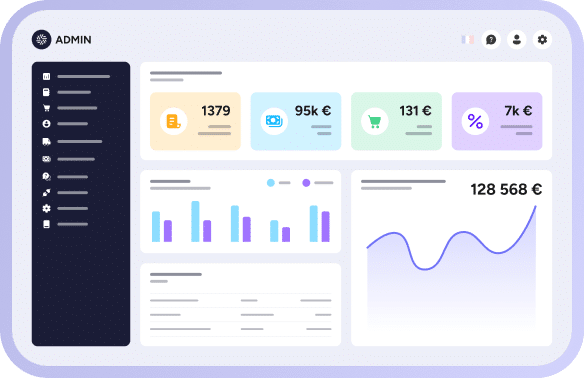
2. Built-in sustainability: making responsible choices easy
Once efficiency and control have been established, the marketplace becomes a powerful tool for implementing a responsible procurement strategy on a large scale. The goal is simple: to make sustainable choices visible and easier and more attractive than the alternative.
- CSR criteria are made visible by highlighting responsible products and suppliers with clear visual labels such as “Local”, “Solidarity”, “Eco-certified” and “Recycled content”. Search filters allow users to sort offers by specific sustainability criteria (e.g. “product made in France”).
- Product pages are enriched with sustainability data, such as composition, place of manufacture, carbon footprint and certifications (e.g. FSC, OEKO-TEX®).
- Transparency and information: this transparency enables employees to make informed choices independently.
- The platform can also promote the circular economy by integrating a catalogue of available internal assets (e.g. furniture and IT equipment), making reuse a simple and prioritised option before any new purchase. It can also promote offers of reconditioned products or repair services, combining economic efficiency with environmental benefits.
3. Synergy: when sustainability improves efficiency.
The alliance is at its best when sustainability features generate efficiency gains themselves.
- Reporting efficiency is improved through complete traceability of every transaction on the platform, which automates data collection for extra-financial reporting (as required by the CSRD). This drastically reduces the time spent manually collecting this information, transforming a cumbersome regulatory obligation into a smooth and reliable process.
- Efficiency through total cost of ownership (TCO): By promoting sustainable, repairable and reusable products, the marketplace encourages analysis based on TCO rather than just the purchase price. A product that is initially more expensive, but which has a longer lifespan or lower maintenance costs, will prove to be more cost-effective in the long term.
- Relationship efficiency: by integrating suppliers into an ecosystem where CSR criteria are valued, the company can transform a purely transactional relationship into a strategic partnership. This collaboration promotes innovation and supply chain resilience.
"In our discussions with procurement managers, we constantly hear about the gap between their CSR ambitions and the reality of their processes. They have clear sustainability goals, but they struggle to implement them due to uncontrolled purchasing and a lack of simple tools for their employees. This is precisely where we come in. We don't just provide technology, we give them the means to operationalise and measure their CSR strategy. Our solution enables them to transform a compliance constraint into a real driver of performance and trust with their customers.”

Alexandre Duquenoy
Measuring success: a unified dashboard
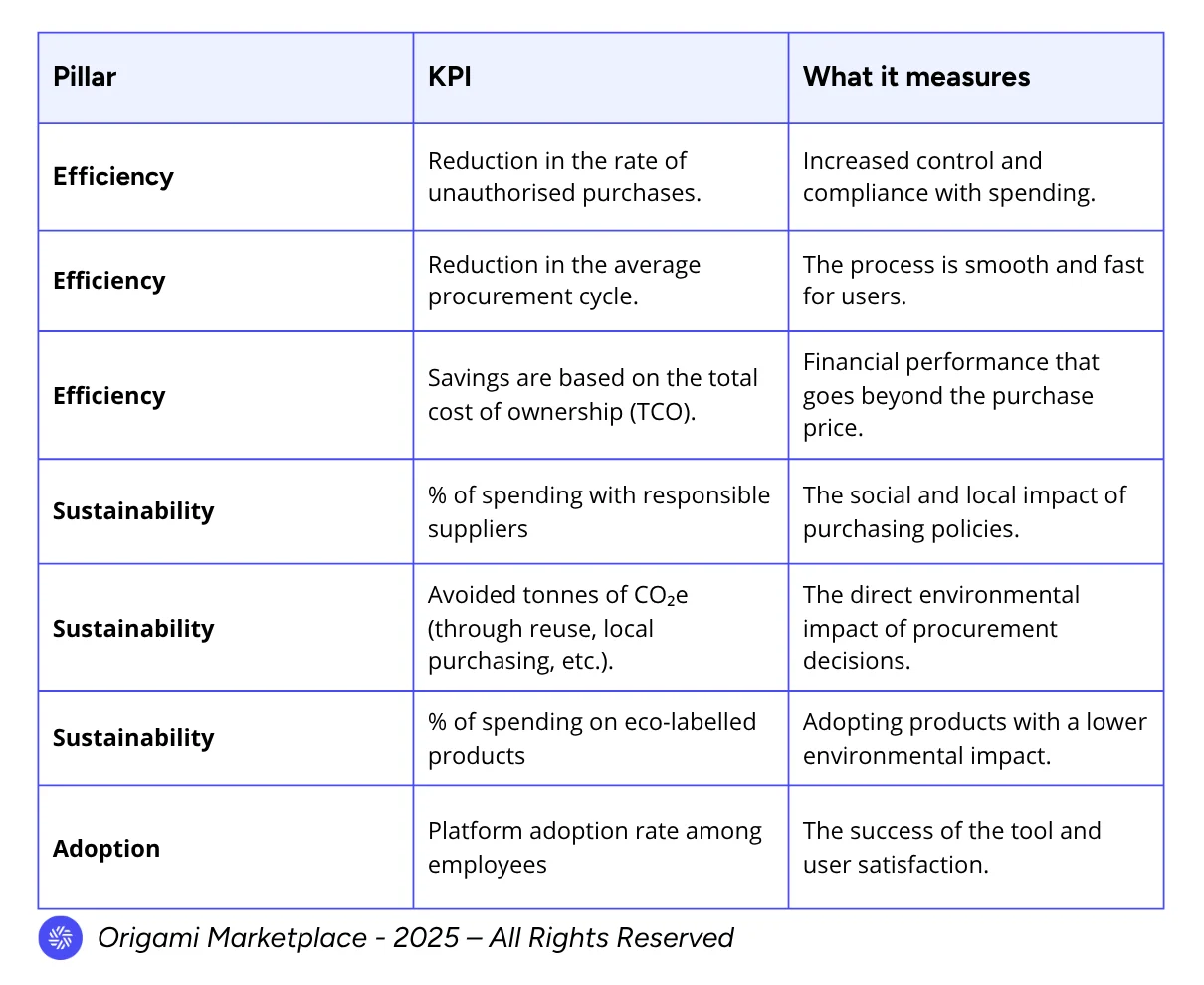
Conclusion
Rather than being contradictory, sustainability and efficiency must be pursued together. The in-house procurement marketplace is the strategic tool that facilitates this. By streamlining processes, it delivers immediate efficiency gains. It uses this efficiency to make responsible choices easy and transparent, rolling out the CSR strategy across the entire organisation.
For companies, investing in such a platform is no longer a choice between doing good and doing things well. It is an acknowledgement that, in the modern economy, one cannot exist without the other. Ethical efficiency, orchestrated by technology, is the new frontier of purchasing performance.
To sum up: the procurement marketplace is your ally in responsible purchasing.
The problem is that companies are struggling to meet their CSR goals without sacrificing purchasing efficiency. Traditional processes are complex and encourage uncontrolled spending, making responsible purchasing difficult for employees to implement.
The solution: An internal marketplace centralises all purchases on a single, user-friendly platform.
How does it work?
- It automates processes, reduces administrative costs and provides full visibility of spending, putting an end to “uncontrolled purchasing”.
- It integrates CSR criteria directly into the purchasing experience, promoting sustainability. Thanks to filters and labels (e.g. local, fair trade, eco-certified), making responsible choices becomes the simplest and most obvious option for everyone.
- Synergy: the platform turns sustainability into a performance lever. Selecting a recycled product results in immediate savings, while the traceability of purchases automates CSR reporting, turning a constraint into an efficient process.
In short, the procurement marketplace is the strategic tool that finally aligns sustainability and efficiency, establishing responsible purchasing as the new performance standard.
👉 Need to digitise your procurement? We’re here to help!

